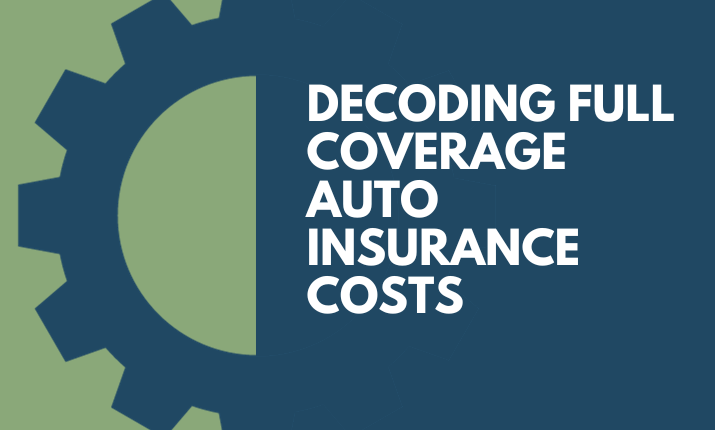Introduction
Understanding full coverage auto insurance costs can be like unravelling an intricate jigsaw puzzle. Here, we’ll break down its components and address factors affecting its costs; from comprehensive to collision coverage and premiums, we will explore all the information you need to make informed decisions about protecting your vehicle.
Definition of Full Coverage
Full coverage auto insurance provides comprehensive protection for your vehicle by combining various forms of coverage into one policy. While liability only covers damages done to others, full range protects yourself and your car.
Full Coverage Consists of Liability
Coverage for Bodily Injury, Property Damage Liability, and Collision Coverage in an Accident (CCV). Comprehensive Coverage proteges from Non-Collision Incidents such as Theft or Vandalism and Uninsured/Underinsured Motorist Coverage.
Avoiding Uninsured and Underinsured Drivers
Personal Injury Protection (PIP) or Medical Payments Coverage will provide adequate protection from uninsured and underinsured drivers.
Factors Affecting Full Coverage Costs
1. Vehicle Make and Model
Your car’s make and model greatly affect auto insurance costs; luxury cars often command higher premiums due to higher repair and replacement expenses.
2. Age, Gender, and Driving Record
Your personal driving history plays an integral role in determining the cost of insurance; drivers with impeccable records typically enjoy lower premiums.
3. Deductible Amount
Your deductible is the amount that must be paid out-of-pocket before insurance coverage kicks in, so choosing a higher deductible could lower premiums but may mean additional outlays should a claim occur. Choosing an option with lower premiums but a higher deductible can increase potential claims costs significantly.
4. Location
Your location is integral to your premiums; urban areas with higher accident and theft rates tend to see higher premiums than rural ones.
5. Coverage Limits
As your coverage limits increase, so will your premium costs; finding an acceptable balance between adequate protection and your budget is essential for optimal success.
Bundle Policies
To maximize cost efficiency, bundle policies such as auto and homeowners/renters insurance together and reap substantial savings. Doing this may result in significant discounts.
Uphold A Clean Driving Record
Following these simple tips can not only keep everyone safer on the roads but can also keep insurance costs under control.
Compare and Evaluate Quotes
Don’t settle for the first quote you receive. Different insurers may offer differing rates, so it pays to shop around.
Conclusion
Navigating full coverage auto insurance costs doesn’t need to be intimidating. By understanding its components and what factors influence its prices, you’re better prepared to make informed decisions. Remember to shop around, maintain a clean driving record, and bundle policies for maximum cost efficiency.
Frequently Asked Questions
1. Is Full Coverage Auto Insurance Necessary for Every Driver?
Full coverage auto insurance isn’t mandatory, but it provides extensive protection for your car and peace of mind for drivers – particularly new or expensive models. It should always be considered when purchasing vehicles that cost thousands more.
2. How can I reduce my full coverage auto insurance costs?
You can lower your costs by keeping a clean driving record, opting for higher deductibles, and comparing quotes from various insurers.
3. Does full coverage auto insurance include rental car coverage?
Some policies offer this feature, though it’s not a standard inclusion. Check with your insurer or consider adding it as an add-on feature.
4. What are the differences between collision and comprehensive coverage?
Collision coverage protects against accidents with other vehicles, while comprehensive covers non-collision incidents like theft or vandalism.
5. Can my full coverage policy be tailored to meet my unique requirements and preferences?
Absolutely – most insurance providers provide options that enable customers to customize their policies based on individual preferences and specifications.

